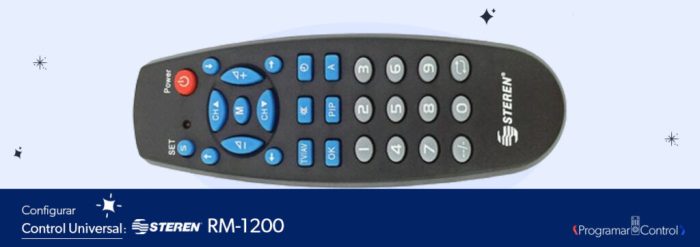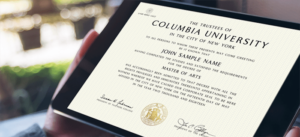In the realm of home entertainment, universal remotes reign supreme, offering the convenience of controlling multiple devices with a single handheld controller. This guide delves into the intricacies of programming universal remotes, empowering you to master this essential household tool.
From understanding the basics to troubleshooting common issues and exploring advanced features, this comprehensive guide provides a step-by-step roadmap to unlock the full potential of your universal remote.
General Overview of Programming Universal Remotes
Universal remotes are a convenient way to control multiple devices, such as televisions, DVD players, and sound systems, with a single remote. They are programmed to work with specific brands and models of devices, and can be customized to control a variety of functions.
There are two main types of universal remotes: infrared (IR) and radio frequency (RF). IR remotes use a line-of-sight connection, meaning that the remote must be pointed directly at the device to work. RF remotes use radio waves, which means that they can control devices even if there is an obstacle between the remote and the device.
Programming a universal remote is typically a simple process. Most remotes come with a code book that lists the codes for different brands and models of devices. Once you have found the code for your device, you can enter it into the remote using the remote's programming buttons.
Step-by-Step Guide to Programming a Universal Remote
- Find the code for your device in the remote's code book.
- Press and hold the "Setup" or "Program" button on the remote.
- Enter the code for your device using the remote's number buttons.
- Press the "Enter" or "OK" button to save the code.
- Test the remote to make sure that it is working properly.
Troubleshooting Common Issues

Programming universal remotes can occasionally encounter hiccups. Understanding common problems and their solutions empowers you to resolve these issues swiftly.
Troubleshooting universal remote programming involves identifying potential obstacles and implementing effective remedies. This section delves into specific issues and provides practical solutions to restore functionality.
Incorrect Device Code
- Issue:The remote fails to control a specific device due to an incorrect code.
- Solution:Refer to the manufacturer's code list or search online for the correct code. Try multiple codes from the list until you find one that works.
Misalignment between Remote and Device
- Issue:The remote may not be properly aligned with the device, resulting in poor signal transmission.
- Solution:Ensure the remote is pointed directly at the device's infrared (IR) receiver. Move closer to the device if necessary.
Obstructions Blocking Signal
- Issue:Obstacles such as walls, furniture, or other electronic devices can interfere with the IR signal.
- Solution:Clear the path between the remote and the device. Consider using a remote extender to bypass obstructions.
Battery Issues
- Issue:Weak or dead batteries can affect the remote's performance.
- Solution:Replace the batteries with new ones. Ensure the batteries are inserted correctly according to the polarity markings.
Software Glitches
- Issue:Occasionally, software glitches can cause the remote to malfunction.
- Solution:Reset the remote to its factory settings. Consult the user manual for specific instructions on how to perform a reset.
Advanced Programming Features
Universal remotes offer advanced programming capabilities that enhance their versatility and customization. These features include macro programming, custom button assignment, and learning remotes.
Macro Programming
Macros allow you to combine multiple remote commands into a single button press. This simplifies complex tasks, such as turning on your TV, switching to a specific channel, and adjusting the volume. To program a macro, refer to your remote's user manual for specific instructions.
Custom Button Assignment
Many universal remotes allow you to assign custom functions to specific buttons. This lets you tailor the remote to your preferences. For example, you could assign the "Guide" button to launch your favorite streaming service.
Learning Remotes
Learning remotes can capture and replicate signals from other remote controls. This allows you to control devices that are not compatible with your universal remote's built-in code library. To use a learning remote, follow the instructions in your remote's user manual.
Tips for Optimal Performance

Optimizing the performance of universal remotes is crucial for a seamless user experience. Factors like range, reliability, and longevity can be influenced by various aspects. Here are some tips to ensure optimal performance:
Positioning and Obstacles
Position the remote facing the device you want to control, avoiding any obstructions between them. Line-of-sight communication is essential for effective signal transmission.
Battery Health
Weak or depleted batteries can affect range and reliability. Use high-quality batteries and replace them regularly to maintain optimal performance.
Interference
Avoid using multiple remotes simultaneously or placing the remote near electronic devices that emit radio waves, such as wireless routers or microwaves, as these can cause interference.
Cleaning and Maintenance
Clean the remote's buttons and sensor regularly with a soft, dry cloth to prevent dirt buildup and ensure proper functionality. Avoid using harsh chemicals or solvents that can damage the remote.
Firmware Updates
Some universal remotes offer firmware updates that can improve compatibility, add new features, or fix bugs. Check the manufacturer's website periodically for updates and apply them to enhance performance.
Troubleshooting
If you encounter any issues with your universal remote, consult the user manual or manufacturer's website for troubleshooting tips. Resetting the remote to factory settings can often resolve common problems.
Compatibility and Device Support

Ensuring compatibility is crucial when using a universal remote. Different brands and models of universal remotes support varying device types and manufacturers.
To determine if a specific device is compatible with a particular universal remote, refer to the manufacturer's website or the remote's user manual. These sources typically provide comprehensive lists of supported devices.
Device Code Databases
Device codes are essential for programming universal remotes to control specific devices. These codes are unique identifiers that allow the remote to communicate with each device.
Several online resources provide extensive databases of device codes. These databases can be searched by device brand, model, or type to find the appropriate code for your device.
Final Review
Whether you're a seasoned home entertainment enthusiast or a novice seeking to streamline your remote control experience, this guide has equipped you with the knowledge and techniques to program your universal remote with confidence. Embrace the convenience and control it offers, and enjoy the seamless integration of your home entertainment devices.
FAQ Insights
Q: How do I know if my universal remote is compatible with my devices?
A: Refer to the compatibility table provided by the remote manufacturer or consult online databases for device codes.
Q: I'm having trouble programming my universal remote. What should I do?
A: Check the troubleshooting section of this guide for common issues and solutions. If the problem persists, contact the remote manufacturer.
Q: Can I program custom buttons on my universal remote?
A: Yes, many universal remotes allow you to program macros and custom buttons for specific functions or devices.




